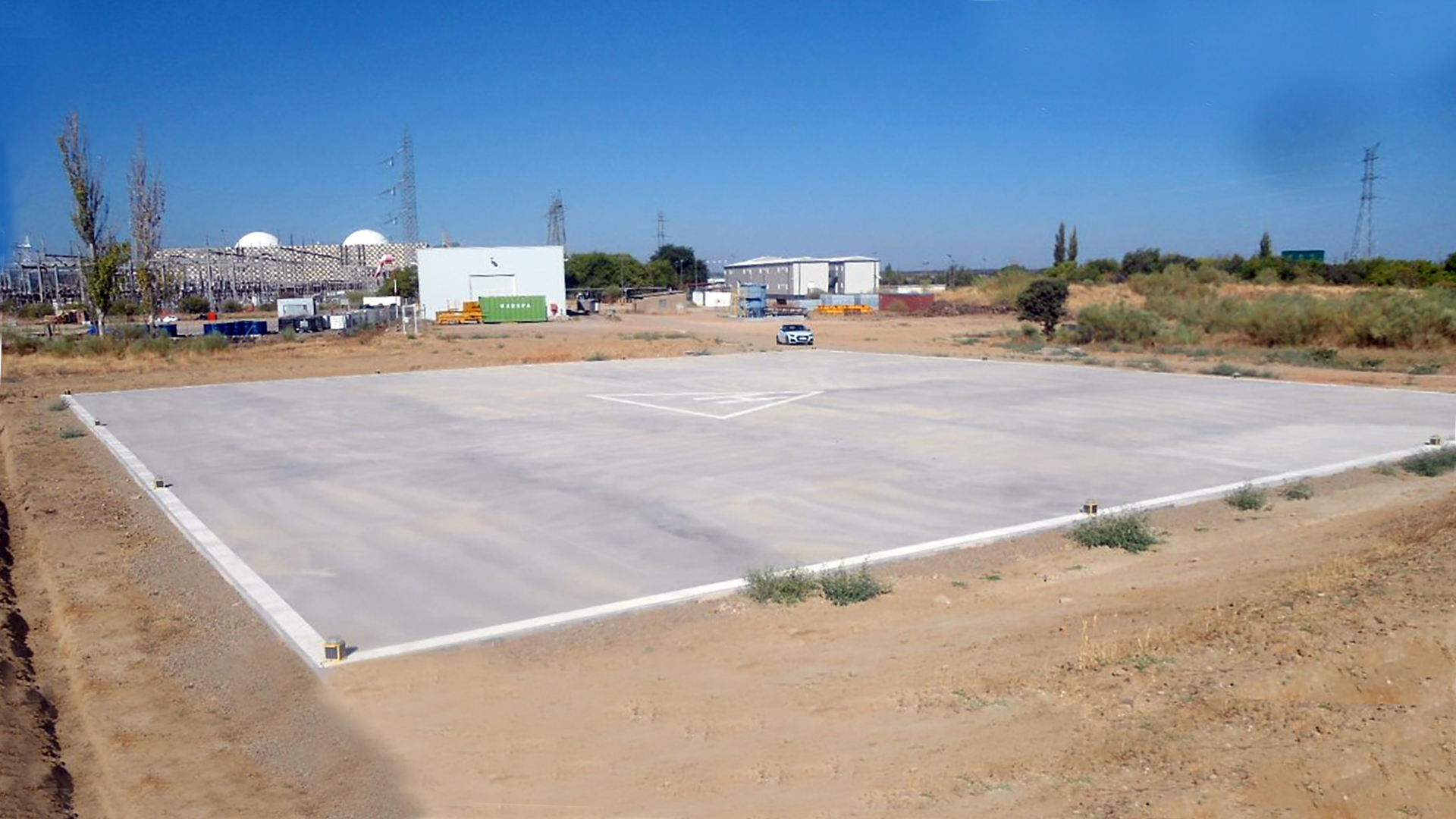In the case of the Almaraz Nuclear Power Plant, the construction of the Francisco Pizarro High Voltage Power Line rendered the location of the existing heliport invalid and inoperable, and a new location is required. The new heliport will be located within the plant’s premises, in accordance with the recommendations of the International Civil Aviation Organization (ICAO) and in line with the proposed objectives. This new heliport will improve operational capacity and thereby enhance the protection of the nuclear power plant itself, providing support in any emergencies that may arise during the daytime or at night and that need to be dealt using the heliport.
The work that has to be carried out prior to the construction of the new heliport is substantial and varied. For example, the choice of site should take into account the inherent advantages of helicopter operations and be suitably located so as to facilitate access to ground transport. The heliport location must consider minimising crosswind operations and avoiding downwind operations. It is also important to take into account operational safety: in this respect, approach and take-off trajectories reaching the heliport must be available. An aeronautical feasibility study is conducted, consisting of a reconnaissance flight that investigates aerial compatibility, identifying potential obstacles in adjacent areas.
For the conceptual and geometric design of the landing platform itself, the type of helicopter that is going to land and take off must also be considered. Known as the design helicopter, this helicopter is one with the heaviest loads and the largest size that will use the facility and which thus conditions the dimensioning of the heliport itself. Importantly, the helipad’s surface must be able to guarantee that the loads transmitted by the aircraft are correctly supported. Moreover, the auxiliary works associated with the landing platform itself have to ensure that it functions properly. Among these are perimeter drains that prevent the accumulation of water and sediment on the helipad’s surface and the access road that provides safe entry to it. Visual aids are also designed to support daytime and night-time operations in all weather conditions.
The works described above constitute the engineering labours that have been carried out for the construction of the new heliport at Almaraz Nuclear Power Plant and that comply with the technical standards that have to be taken into account in a project of these characteristics.





